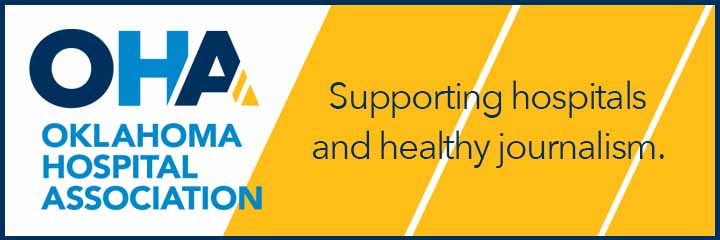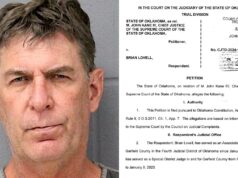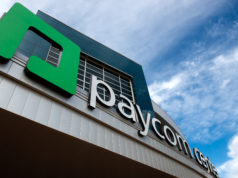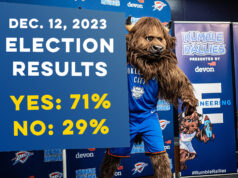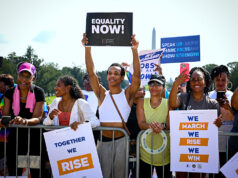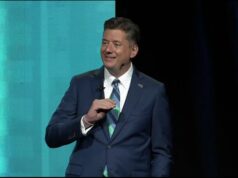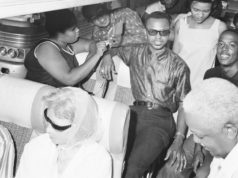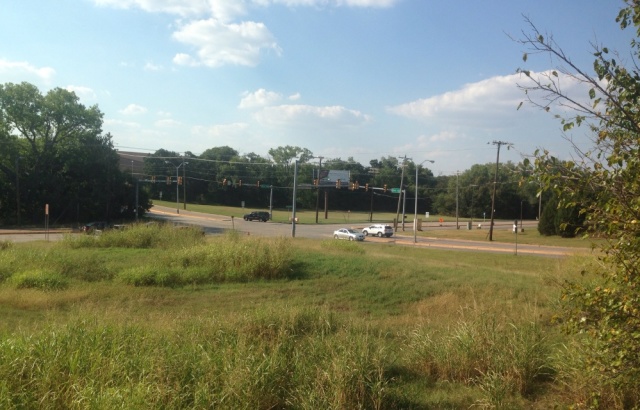
(Editor’s Note: Sandino L. Thompson is a member of the planning committee pushing for a MAPS 4 Neighborhoods effort.)
If you regularly drive Martin Luther King Boulevard in northeast Oklahoma City, you know the trip provides a lasting visual of progress and paralysis, all within blocks of each other.
A $30 million development called King’s Crossing is set to transform the intersection of Northeast 23rd Street and MLK, but several times a week, I see people in motorized wheelchairs ride in the boulevard’s gutter for lack of sidewalks or cutouts along the four-lane road.
A few blocks north, Thelma Parks Elementary students have cut foot paths through grass fields to reach their neighborhoods. Senior citizens and working-class folk sit at uncovered bus benches balanced precariously on the edge of a major city street. This all happens despite the presence of the Oklahoma Department of Public Safety, the Oklahoma Military Department, the Oklahoma Department of Corrections, the Oklahoma Turnpike Authority and MetroTech. These public entities and significant employers all have offices within the same 15 blocks, and each would easily justify more comprehensive connections and infrastructure along MLK. And yet, it has not happened.
If city leaders choose to pursue a MAPS 4 for Neighborhoods — as I and many others hope they will — perhaps the future picture of Martin Luther King Boulevard can receive the attention and investment it certainly needs.
Truth in jest
Comedian Chris Rock tells a joke about America’s Martin Luther King Boulevards that is so painfully true that one must laugh to keep from crying. In short, he observes how, across the country, you know you are on Martin Luther King Boulevard because you are in a rough part of town.
This perception has finally become such a unifying element that some cities, like Atlanta, have committed to changing it. While this imagery does not appropriately capture the strong sense of community and determination within the neighborhoods along MLK Boulevard in Oklahoma City, decades of disconnection and underinvestment have perpetuated this stereotype here as well. That perception has become a cancer to efforts at revitalizing the area.
In 2015, more than 20 years since the first MAPS program changed the course of Oklahoma City forever, people in northeast Oklahoma City are right to expect better.
Most of us have heard the story of the downtown renaissance enough to take it for granted. Despite all this success, two miles to the east MLK Boulevard represents the disheartening trope captured so poignantly by Mr. Rock’s satire.
MAPS beyond downtown
This reality demonstrates both the strength and challenges that underpin my experience as a born-and-raised member of the northeast OKC community. I am the grandson of bus drivers and house maids who came to Oklahoma City early in its history because it represented hope and opportunity.
I am the son of two Roscoe Dunjee High School graduates. As a student of Clara Luper, my father participated in lunch-counter sit ins in the 1950’s. My mother was the first in her family to graduate from Oklahoma State University, where I also graduated with a degree in engineering. As a child, I was taught by example to be principled and stand for what you believe in. This regularly meant standing up to those who didn’t share our belief that Oklahoma City should be a place of hope and opportunity for families like mine. Too often, it meant protest: marches against discrimination, lawsuits against Jim Crow laws, fighting the efforts of redlining and urban renewal that seemed intent upon systematically disconnecting the black community’s strongest elements and undermining our significant cultural imprint on the city.
I say this not to dwell on the past, but rather to acknowledge it and help it inform the deliberations currently taking place for our future. I personally represent a brain-drain reversal — someone who returned home after initially being disillusioned with what could be done. Now, I see hope based on the belief we are prepared to move past protests and past the idea of an “us” and a “them.”
What seems so remarkable about today in Oklahoma City is that other individuals and groups are similarly committed to improving the northeast side. We have students, artists and professionals working alongside elected officials and long-time community leaders to address this challenge with the support of both public and private resources. Significant capital investment from the city for connectivity, culture and health could plant critical seeds for significant growth to take place. Several capable partners and stakeholders are ready to work together to move the community forward in northeast OKC.
Healing scars and changing perceptions
In the past, capital investments such as freeways led to the division of some of our most critical neighborhoods, such as the Edwards community and the Deep Deuce. This left neighborhoods devastated, divided and scarred by concrete thoroughfares with unhealthy after effects.
Today, we have the chance to heal those scars. We can change the perception of MLK Boulevard and build community where it crosses streets like Northeast 4th, Northeast 10th and Northeast 23rd. Those streets can connect MLK to the ongoing renaissance being experienced just two miles west.
Perhaps even more critical are the existing community assets like the Katy Trail and the Adventure Line that give northeast OKC a distinct opportunity to create an urban parkway connected to other parks and public spaces that would encourage increased density, alternative transportation and pedestrian-oriented activity from Bricktown to the Adventure District.
These already-public reclaimed spaces offer a chance for strategic uses like the Beltline in Atlanta, urban thoroughfares that create senses of place — somewhere to catch a train, walk, bike or even ride a horse. Ultimately, places must be active to contribute to a healthy and stable community.
I believe strongly that a Maps 4 Neighborhoods focused on investments in connectivity, culture, and health has the potential to unlock new ideas and innovations linked to the aspirations of motivated Gen X’ers and Millennials who are considered so key to thriving cities in the 21st Century.
We can shed the comparisons to Dallas, Austin or Kansas City and cultivate an authentically Oklahoman quality of life that ensures Oklahoma City is the place of hope and opportunity for my 10-year-old daughter that it has been for me. She and her contemporaries will know no other future but what we leave them, just as many current young adults never knew this city before the first MAPS.
I encourage anyone who is passionate about the impact these ideas can have on our community to drive Martin Luther King Boulevard — and many other under-invested thoroughfares — and just imagine what could be done.
